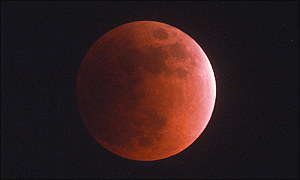Lol, just read this thread now. I believe my name was mentioned (although incorrectly spelled). Alright I'll clarify things.
1) The sky looks redder at sunset (or sunrise) because of scattering. Redshift has nothing to do with it. It can be hown with electromagnetic theory that when light enters a scattering medium, the effect is much stronger at short wavelengths (blue light) than at long ones (red light).
During the day, this causes the sky to appear blue, because if you look at an empty region of sky, all you see is the scattered blue light.
During sunrise/sunset, the light from the sun must travel a much larger distance in the atmosphere, so most blue light is scattered away and never reaches us. Only some red light remains. (Also, Mie scattering dominates over Rayleigh scattering in this regime).
2) As for light from interstellar objects, you're confusing two entirely different things.
i) Redshift makes an object redder when it moves away from us quickly. This happens mostly with distant galaxies and the objects in them. You should note that this phenomenon affects the object's light at all wavelengths: it shifts all the spectrum towards redder colors.
ii) Interstellar absorption is a completely different thing. When there's dust or cold gas between us and a light source (star, nebula, galaxy), some parts of the light spectrum will be absorbed and never reach us.
The classic example is the Sun. The spectrum of the sun should be a very smooth curve (as described by the Planck blackbody law). When measured inside the atmosphere, one discovers the otherwise smooth curve has many small "pits" at particular wavelengths. These are called Fraunhofer lines, and they're a classic example of an absorption spectrum.


